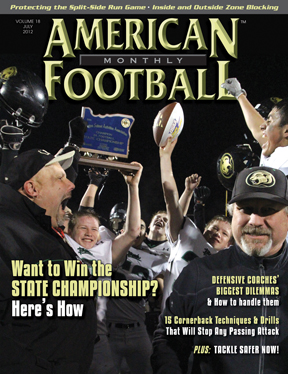Article CategoriesAFM Magazine
|
Protecting the Split-Side Running Gameby: Steve CanterQuarterbacks Coach Norfolk State University © More from this issue There are ways to account for a defense’s flat player by using the front-side bubble,fly motion, and the bubble and go. As football has continued to evolve and change over the last decade, teams at all levels are lining up in more open formations on offense. The removal of the fullback and the tight end from formations has forced offenses to find other ways to effectively run the football. Many teams are forced to have answers for defenses that are making it difficult to run the ball to the split-side of the formation. We define the split-side as a two-man surface (guard/tackle), or the side of the formation without an attached tight end. When the tight end and fullback are absent from the playside of a run, someone must account for the defenses’ #4 defender or flat player. The reasons we must account for the #4 def....The full article can only be seen by subscribers.
|
|
|||||||
| HOME |
MAGAZINE |
SUBSCRIBE | ONLINE COLUMNISTS | COACHING VIDEOS |
Copyright 2025, AmericanFootballMonthly.com
All Rights Reserved





